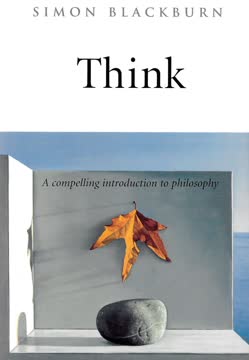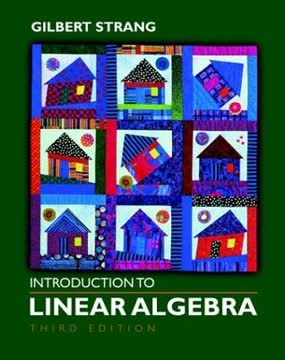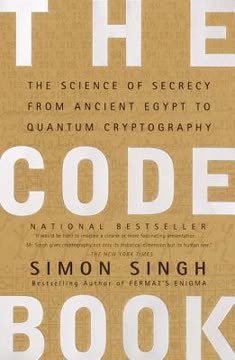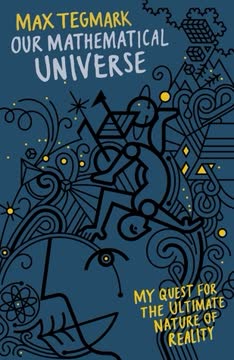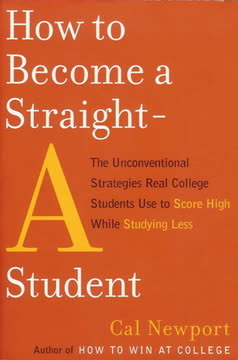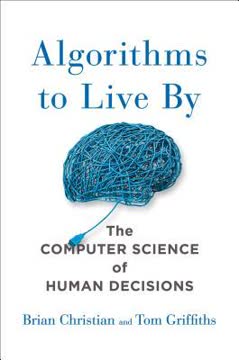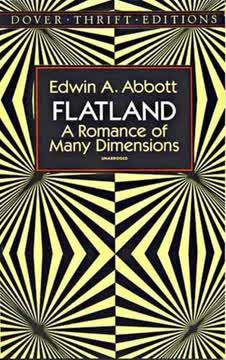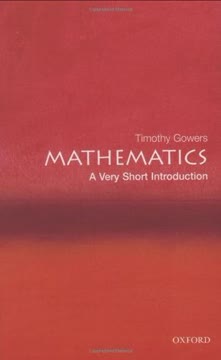முக்கியமான எடுத்துக்காட்டுகள்
1. மாற்றத்தை ஏற்றுக்கொள்: பல்கலைக்கழக கணிதம் ஒரு புதிய சவால்
பல்கலைக்கழக கணிதம் மிகுந்த புத்திசாலித்தனமான மற்றும் கடினமாக உழைக்கும் மாணவர்களையும் சவாலுக்கு உட்படுத்த வேண்டும்.
கவனத்தை மாற்று. பல்கலைக்கழக கணிதம் பள்ளி நிலை கணிதத்திலிருந்து ஒரு முக்கியமான மாறுபாட்டைக் குறிக்கிறது. கணக்கீட்டிலிருந்து ஆதாரத்திற்கான கவனம் மாறுகிறது, இது மாணவர்கள் கணிதக் கருத்துக்களுடன் புதிய வழிகளில் தொடர்பு கொள்ள வேண்டும் என்பதைக் குறிக்கிறது. இந்த மாற்றம் சவாலாக இருக்கலாம், ஆனால் இது கல்வி வளர்ச்சியின் சாதாரண பகுதியாகும்.
யதார்த்தமான எதிர்பார்ப்புகள். உடனடியாக எல்லாவற்றையும் புரிந்துகொள்வது இலக்கு அல்ல. புதிய கருத்துக்களுடன் ஆரம்பத்தில் போராடுவது சாதாரணம். பல்கலைக்கழக கணிதத்தில் வெற்றி என்பது உடனடி கற்றலின் மேல் அல்ல, ஆனால் காலப்போக்கில் ஆழமான புரிதலை வளர்ப்பதில் உள்ளது. மாணவர்கள் முக்கியமான கருத்துக்களையும் கோட்பாடுகளையும் புரிந்துகொள்ள முயற்சிக்க வேண்டும், ஒவ்வொரு விவரத்தையும் முழுமையாகப் புரிந்துகொள்வது சாத்தியமற்றது அல்லது தேவையற்றது என்பதை உணர வேண்டும்.
சேர்ந்து வளருங்கள். வெற்றி பெற, மாணவர்கள்:
- தங்கள் படிப்பு நுட்பங்களை சரிசெய்ய வேண்டும்
- கற்பனை சிந்தனை திறன்களை வளர்க்க வேண்டும்
- ஆதாரங்களை உருவாக்கவும் புரிந்துகொள்ளவும் கற்றுக்கொள்ள வேண்டும்
- கணித உணர்வை வளர்க்க வேண்டும்
- வளர்ச்சிக்கான வாய்ப்புகளாக சவால்களை ஏற்றுக்கொள்ள வேண்டும்
2. கற்பனை சிந்தனை மற்றும் ஆதார கட்டமைப்பை கற்றுக்கொள்ளுங்கள்
ஆதாரங்கள், தர்க்க ரீதியான முடிவுகள் மற்றும் பொருட்கள்
கற்பனை பொருட்கள். பல்கலைக்கழக கணிதம் பரந்த அளவில் கற்பனை பொருட்களுடன் தொடர்புடையது. இவை எண்கள் மற்றும் செயல்பாடுகள் போன்ற பரிச்சயமான கருத்துக்களையும், இருமுறை செயல்பாடுகள் மற்றும் ஒற்றுமைகள் போன்ற மேம்பட்ட கருத்துக்களையும் உள்ளடக்கியவை. இந்த கற்பனை பொருட்களை கருத்தில் கொண்டு சிந்திக்க கற்றுக்கொள்வது உயர் நிலை கணிதத்தைப் புரிந்துகொள்வதற்குத் தேவையானது.
ஆதார கட்டமைப்பு. ஆதாரங்கள் பல்கலைக்கழக கணிதத்தின் மையமாக உள்ளன. அவை தேவைப்படும்:
- வரையறைகள் மற்றும் கோட்பாடுகளைப் புரிந்துகொள்வது
- தர்க்க ரீதியான சிந்தனை
- கணிதக் கருத்துக்களை தெளிவாக தொடர்பு கொள்வது
மாணவர்கள் பல்வேறு ஆதார நுட்பங்களைப் பயிற்சி செய்ய வேண்டும்:
- நேரடி ஆதாரம்
- முரண்பாட்டின் மூலம் ஆதாரம்
- தூண்டல் மூலம் ஆதாரம்
- தனித்துவ ஆதாரங்கள்
இந்த திறன்களை வளர்ப்பது நேரம் மற்றும் பயிற்சியை எடுத்துக்கொள்ளும், ஆனால் அவை மேம்பட்ட கணித சிந்தனையின் அடித்தளமாக அமைகின்றன.
3. பயிற்சி பழக்கவழக்கங்கள் மற்றும் நேர மேலாண்மை திறன்களை வளர்க்கவும்
இத்தகைய புள்ளிகளை மேலும் பரிசீலிக்க மாணவர்களை வழிநடத்த, மற்றும் பிற இடங்களில் நன்கு அமைக்கப்பட்டுள்ள பொருட்களை நகலெடுக்க தவிர்க்க, ஒவ்வொரு அத்தியாயத்தின் முடிவில் மேலும் வாசிப்பு பிரிவை சேர்த்துள்ளேன்.
பயனுள்ள வாசிப்பு. கணிதத்தை வாசிப்பது பிற பாடங்களை வாசிப்பதிலிருந்து மாறுபடுகிறது. இது செயல்பாட்டைத் தேவைப்படுத்துகிறது, பெரும்பாலும் உங்களால் எடுத்துக்காட்டுகள் மற்றும் ஆதாரங்களைச் செயல்படுத்துவது. ஒரு அமைப்பை உருவாக்கவும்:
- குறிப்புகளை எடுக்க
- முக்கிய கருத்துக்களை சுருக்கம் செய்ய
- கருத்து வரைபடங்களை உருவாக்க
- முறையாக மதிப்பாய்வு மற்றும் திருத்தம் செய்ய
நேர மேலாண்மை. பல்கலைக்கழக பாடங்கள் பள்ளியைவிட வேகமாக நகர்கின்றன. பயனுள்ள நேர மேலாண்மை முக்கியம்:
- ஒரு கால அட்டவணையை உருவாக்கவும்
- வாராந்திர படிப்பு அட்டவணையை உருவாக்கவும்
- அவசரத்தன்மை மற்றும் முக்கியத்துவத்தின் அடிப்படையில் பணிகளை முன்னுரிமை கொடுக்கவும்
- திருத்தம் மற்றும் பிரச்சினை தீர்க்கும் பயிற்சிக்கு நேரம் ஒதுக்கவும்
சமநிலை அணுகுமுறை. பொருளின் பெரும்பகுதியை நன்கு புரிந்துகொள்ள முயற்சிக்கவும், எல்லாவற்றையும் மேற்பரப்பாக கையாள முயற்சிக்காதீர்கள். மைய கருத்துக்களிலும் அவற்றின் பயன்பாடுகளிலும் கவனம் செலுத்துங்கள்.
4. சொற்பொழிவுகளுடன் செயல்படவும் மற்றும் கிடைக்கும் வளங்களைப் பயன்படுத்தவும்
ஒரு சொற்பொழிவிலிருந்து கற்றுக்கொள்ள விரும்பினால், அதில் செல்ல வேண்டும்.
செயல்பாட்டு பங்கேற்பு. பல்கலைக்கழகத்தில் சொற்பொழிவுகள் தகவலின் முதன்மை ஆதாரமாக உள்ளன. அவற்றின் மதிப்பை அதிகரிக்க:
- முறையாக பங்கேற்கவும்
- முந்தைய பொருளை மதிப்பாய்வு செய்வதன் மூலம் தயாராக இருங்கள்
- பயனுள்ள குறிப்புகளை எடுக்கவும்
- கருத்துக்கள் தெளிவாக இல்லாதபோது கேள்விகள் கேட்கவும்
- சொற்பொழிவு உள்ளடக்கத்தை விரைவில் மதிப்பாய்வு மற்றும் சுருக்கம் செய்யவும்
வளங்களைப் பயன்படுத்தவும். பல்கலைக்கழகங்கள் பல்வேறு ஆதரவு அமைப்புகளை வழங்குகின்றன:
- விரிவுரையாளர்களுடன் அலுவலக நேரம்
- பயிற்சிகள் மற்றும் பிரச்சினை வகுப்புகள்
- கணித ஆதரவு மையங்கள்
- ஆன்லைன் வளங்கள் மற்றும் மெய்நிகர் கற்றல் சூழல்கள்
தேவைப்படும் போது உதவியைத் தேட தயங்க வேண்டாம். இந்த வளங்களுடன் தொடர்பு கொள்வது உங்கள் புரிதலையும் செயல்திறனையும் பெரிதும் மேம்படுத்த முடியும்.
5. பிரச்சினை தீர்க்கும் திறன்களையும் கணித உணர்வையும் வளர்க்கவும்
இது அனைவருக்கும் ஊக்கமளிக்கக்கூடியது—நீங்கள் இதுவரை யோசிக்காத ஒரு விஷயத்தில் நீங்கள் உண்மையான திறமையை கண்டுபிடிக்கலாம்.
பிரச்சினை தீர்க்கும் உத்திகள். பிரச்சினை தீர்க்கும் அணுகுமுறைகளின் கருவி பெட்டியை உருவாக்கவும்:
- சிக்கலான பிரச்சினைகளை சிறிய பகுதிகளாக பிரிக்கவும்
- முறை மற்றும் ஒப்புமைகளை தேடவும்
- விரும்பிய முடிவிலிருந்து பின்வாங்கவும்
- காட்சிப்படுத்தல் மற்றும் வரைபடங்களைப் பயன்படுத்தவும்
- அறியப்பட்ட கோட்பாடுகள் மற்றும் நுட்பங்களை படைப்பாற்றலுடன் பயன்படுத்தவும்
உணர்வை உருவாக்கவும். கணித உணர்வு அனுபவத்துடன் வருகிறது. அதை வளர்க்க:
- பல எடுத்துக்காட்டுகளைச் செயல்படுத்தவும்
- பிரச்சினைகளின் மாறுபாடுகளை ஆராயவும்
- கணக்கீடு செய்வதற்கு முன் முடிவுகளை கணிக்க முயற்சிக்கவும்
- தீர்வுகள் ஏன் வேலை செய்கின்றன என்பதைப் பற்றி சிந்திக்கவும்
சவால்களை ஏற்றுக்கொள். கடினமான பிரச்சினைகளிலிருந்து விலகாதீர்கள். அவை பெரும்பாலும் மிகவும் மதிப்புமிக்க கற்றல் அனுபவங்களை வழங்குகின்றன மற்றும் கணிதக் கருத்துக்களின் ஆழமான புரிதலுக்கு வழிவகுக்கின்றன.
6. கணிதத்தை தெளிவாகவும் தொழில்முறை ரீதியாகவும் எழுதுங்கள்
நீங்கள் வேலைக்குத் தகுதியானவராகவும் வெற்றிகரமாகவும் இருக்க விரும்பினால், பிரச்சினைகளை எவ்வாறு தீர்க்க வேண்டும் என்பதைப் பற்றி நல்ல முறையில் வேலை செய்வது முக்கியம். ஆனால் நீங்கள் சிறந்த தீர்வாக நினைக்கும் விஷயத்தை நம்பகமாக தொடர்பு கொள்வதும் முக்கியம்.
தெளிவான தொடர்பு. கணிதத்தை நன்கு எழுதுவது முக்கியம்:
- புரிதலை வெளிப்படுத்த
- சிறந்த மதிப்பெண்களைப் பெற
- எதிர்கால தொழில்களுக்கு தயாராக
நல்ல கணித எழுத்தின் முக்கிய அம்சங்கள்:
- துல்லியமான மொழி மற்றும் சரியான குறியீட்டை பயன்படுத்தவும்
- தர்க்க ரீதியாக வாதங்களை அமைக்கவும்
- ஒவ்வொரு படிக்குமான தெளிவான விளக்கங்களை வழங்கவும்
- பொருத்தமான எடுத்துக்காட்டுகள் மற்றும் எதிர்மறை எடுத்துக்காட்டுகளைப் பயன்படுத்தவும்
தொழில்முறை வழங்கல். கணித எழுத்தை தனித்திறனாக வளர்க்க வேண்டும். ஆதாரங்கள், விளக்கங்கள் மற்றும் தீர்வுகளை தெளிவாகவும் சுருக்கமாகவும் எழுத பயிற்சி செய்யுங்கள். இந்த திறன் கல்வி மற்றும் தொழில்முறை சூழல்களில் மதிப்புமிக்கதாக இருக்கும்.
7. கல்வி வெற்றியையும் தனிப்பட்ட வளர்ச்சியையும் தொழில் தயாரிப்பையும் சமநிலைப்படுத்துங்கள்
கணிதவியலாளர்கள் பிழைகளை சுட்டிக்காட்டும்போது நன்றி தெரிவிக்கிறார்கள், ஏனெனில் அவற்றை உடனடியாக சரிசெய்வது பொதுவாக எளிதானது, பின்னர் திரும்பிச் சென்று அதைச் செய்வதை விட.
முழுமையான வளர்ச்சி. பல்கலைக்கழக வாழ்க்கை கல்வியைத் தவிர வாய்ப்புகளை வழங்குகிறது:
- கணிதக் கிளப்புகள் அல்லது சங்கங்களில் சேரவும்
- கருத்தரங்குகள் மற்றும் விருந்தினர் சொற்பொழிவுகளில் பங்கேற்கவும்
- பயிற்சிகள் அல்லது வேலை இடங்களை பரிசீலிக்கவும்
- குழு வேலை மற்றும் தொடர்பு போன்ற மென்மையான திறன்களை வளர்க்கவும்
தொழில் தயாரிப்பு. தொழில் விருப்பங்களை ஆரம்பத்திலேயே யோசிக்கத் தொடங்குங்கள்:
- கணிதத்தின் பல்வேறு பகுதிகளை ஆராயவும்
- கணித திறன்கள் பல்வேறு தொழில்களில் எவ்வாறு பொருந்துகின்றன என்பதைப் பரிசீலிக்கவும்
- தொழில் சேவைகளிடமிருந்து ஆலோசனை தேடவும்
- பழைய மாணவர்களுடனும் தொழில்முறை நபர்களுடனும் தொடர்பு கொள்ளவும்
தொடர்ந்து கற்றல். கணிதம் ஒரு பரந்த மற்றும் வளர்ந்து வரும் துறை. வாழ்நாள் முழுவதும் கற்றல் மனநிலையை வளர்க்கவும்:
- புதிய கணித வளர்ச்சிகளைப் பற்றி ஆர்வமாக இருங்கள்
- பாடநெறி பொருளைத் தாண்டி படிக்கவும்
- பட்ட மேற்படிப்பு அல்லது ஆராய்ச்சி வாய்ப்புகளை பரிசீலிக்கவும்
நீங்கள் ஒரு வெற்றிகரமான கணிதவியலாளராக அல்லது பிற தொழில்களில் கணித திறன்களைப் பயன்படுத்துவதற்கான பயணம் உங்கள் பட்டப்படிப்பு ஆண்டுகளைத் தாண்டி நீள்கிறது என்பதை நினைவில் கொள்ளுங்கள். பல்கலைக்கழக மட்டத்தில் கணிதத்தைப் படிப்பதன் மூலம் வரும் சவால்களையும் வாய்ப்புகளையும் ஏற்றுக்கொள்ளுங்கள்.
கடைசியாக புதுப்பிக்கப்பட்டது:
FAQ
1. What is How to Study for a Mathematics Degree by Lara Alcock about?
- Comprehensive study guide: The book explains how to approach university-level mathematics, focusing on the transition from procedural school math to abstract reasoning, proofs, and independent study.
- Skills and mindset: It covers essential study skills, time management, and the mindset needed to succeed in a mathematics degree.
- Not a textbook: Rather than teaching specific math content, it provides strategies for learning, understanding, and thriving in undergraduate mathematics.
- Preparation for challenges: The book prepares students for both the intellectual and practical demands of university mathematics.
2. Why should I read How to Study for a Mathematics Degree by Lara Alcock?
- Bridges educational gaps: The book addresses the common struggles students face when moving from school to university mathematics, such as understanding proofs and abstract concepts.
- Research-based strategies: It draws on mathematics education research to offer practical advice and proven study techniques.
- Boosts efficiency and confidence: Readers learn how to study smarter, manage their time, and communicate mathematics clearly, leading to greater academic success and enjoyment.
- Normalizes challenges: The book reassures students that initial struggles are normal and provides strategies to overcome them.
3. What are the key takeaways from How to Study for a Mathematics Degree by Lara Alcock?
- Shift to abstraction: University mathematics requires a move from procedural calculation to abstract reasoning, focusing on definitions, theorems, and proofs.
- Active, independent learning: Success depends on developing skills for independent reading, writing, and synthesizing mathematical ideas.
- Effective study habits: Techniques like summarizing notes, creating concept maps, and prioritizing study topics are emphasized.
- Growth mindset: Persistence, flexibility, and learning from mistakes are crucial for adapting to the demands of a mathematics degree.
4. What are the main differences between school mathematics and university mathematics according to Lara Alcock?
- Procedures vs. proofs: School math emphasizes calculation and following instructions, while university math focuses on constructing and understanding proofs.
- Abstract thinking: University mathematics involves thinking about numbers, functions, and other concepts as abstract objects, often organized hierarchically.
- Greater responsibility: Students must make more decisions about which methods to use and how to approach problems, rather than relying on explicit instructions.
- Conceptual challenges: The shift to abstraction and formal reasoning can be a significant adjustment for many students.
5. How does Lara Alcock define and explain abstract objects in university mathematics?
- From processes to objects: Concepts like numbers and functions are initially understood as processes but are later treated as objects in their own right.
- Hierarchical structure: Mathematical objects are organized in layers, with higher-level objects depending on the understanding of lower-level ones.
- New object types: The book introduces relations, binary operations, and symmetries as mathematical objects, explaining their properties and significance.
- Importance for advanced math: Thinking of these entities as objects is essential for engaging with higher-level mathematics.
6. What advice does How to Study for a Mathematics Degree by Lara Alcock give about understanding and using mathematical definitions?
- Precision and operability: Mathematical definitions are exact, with no exceptions, and provide clear criteria for use in proofs.
- Inclusion and exclusion: Students should consider both examples that fit a definition and those that do not to fully grasp its boundaries.
- Adjusting intuition: Formal definitions may differ from everyday intuition, especially in boundary cases, requiring students to refine their understanding.
- Foundation for reasoning: Mastery of definitions is crucial for constructing and understanding proofs.
7. How does Lara Alcock describe the role and structure of theorems in university mathematics?
- Logical necessity: Theorems express relationships that must be true once definitions are established, often in “if… then…” form.
- Understanding through examples: Students are encouraged to examine examples and analyze the logical structure to comprehend theorems.
- Precise language: The book emphasizes the importance of using logical terms like “if,” “only if,” and quantifiers correctly.
- Avoiding misinterpretation: Everyday meanings of logical words can differ from their mathematical usage, so precision is essential.
8. What insights does How to Study for a Mathematics Degree by Lara Alcock provide about mathematical proofs and their importance?
- Proofs as logical arguments: Proofs demonstrate why theorems are true, starting from definitions and using logical deductions.
- Demystifying proofs: Many school-level calculations are simple proofs; university proofs are more formal but follow similar principles.
- Building coherent theory: Proofs help mathematicians understand how results fit into a larger, consistent framework.
- Practice in rigorous thinking: Engaging with proofs develops the logical reasoning skills central to advanced mathematics.
9. What are the common types of proofs and proof strategies discussed by Lara Alcock?
- Direct proof: Involves logically deducing the conclusion from the premises step-by-step.
- Proof by contradiction: Assumes the opposite of the desired result and shows this leads to a contradiction.
- Proof by induction: Proves a base case and then shows that if the statement holds for one case, it holds for the next, covering all natural numbers.
- Additional techniques: Includes proof by cases, uniqueness proofs, and algebraic manipulations to simplify arguments.
10. What strategies does Lara Alcock recommend for reading and understanding mathematics texts and notes?
- Active, independent reading: Students should develop skills to learn from written materials, not just lectures.
- Identifying structure: Recognize definitions, theorems, examples, and proofs to engage effectively with the material.
- Summarizing and mapping: Creating summary lists and concept maps helps synthesize information and see connections.
- Using examples and diagrams: Checking examples and using diagrams can clarify abstract concepts and aid memory.
11. How does How to Study for a Mathematics Degree by Lara Alcock address time management and overcoming panic?
- Planning and prioritization: The book suggests creating term and weekly plans, prioritizing tasks, and breaking study into manageable chunks.
- Realistic expectations: Students are encouraged to accept that not all tasks will be completed perfectly and that setbacks are normal.
- Dealing with panic: When overwhelmed, making a prioritized list and working through tasks in short, timed sessions can restore control.
- Seeking support: Utilizing university resources and checking progress with a trusted person can help manage stress and maintain progress.
12. What does Lara Alcock say about interacting with lecturers, tutors, and peers in a mathematics degree?
- Active engagement: Students should take initiative in seeking help, preparing questions, and using office hours or tutorials.
- Effective communication: Clear, polite communication—especially in emails and group settings—is important for productive interactions.
- Group study: Working with peers can enhance understanding, but students should avoid distractions and ensure meaningful engagement.
- Utilizing support services: The book encourages early and regular use of university resources like support centers and counseling for academic and personal growth.
விமர்சனங்கள்
கணித பட்டத்திற்கு எப்படி படிப்பது என்ற புத்தகம் பெரும்பாலும் நேர்மறையான விமர்சனங்களைப் பெறுகிறது, பலரும் பல்கலைக்கழக மட்டத்திலான கணிதத்திற்கு மாறுவதற்கான அதன் ஆழமான ஆலோசனைகளைப் பாராட்டுகின்றனர். கணித பட்டப்படிப்பு திட்டத்தில் என்ன எதிர்பார்க்கலாம் என்பதைப் புரிந்துகொள்வதற்கு இது உதவிகரமாக இருப்பதாக பலர் கருதுகின்றனர் மற்றும் பொதுவான கேள்விகள் மற்றும் கவலைகளை முன்கூட்டியே கணித்ததற்காக ஆசிரியரைப் பாராட்டுகின்றனர். பல்கலைக்கழகத்தைத் தொடங்குவதற்கு முன்போ அல்லது பட்டத்தின் ஆரம்பத்தில் படிக்கும்போது இது மிகவும் பயனுள்ளதாக இருக்கும் என்று சில வாசகர்கள் பரிந்துரைக்கின்றனர். சில விமர்சகர்கள் இது மேம்பட்ட மாணவர்கள் அல்லது பிற துறைகளில் உள்ளவர்களுக்கு குறைவாக பயனுள்ளதாக இருக்கலாம் என்று குறிப்பிடுகின்றனர். மொத்தத்தில், வாசகர்கள் நிரூபணங்கள், கணிதம் படிப்பது மற்றும் பல்கலைக்கழக வாழ்க்கைக்கு ஏற்படுதல் போன்றவற்றில் புத்தகத்தின் வழிகாட்டுதலுக்கு மதிப்பளிக்கின்றனர்.
Similar Books
